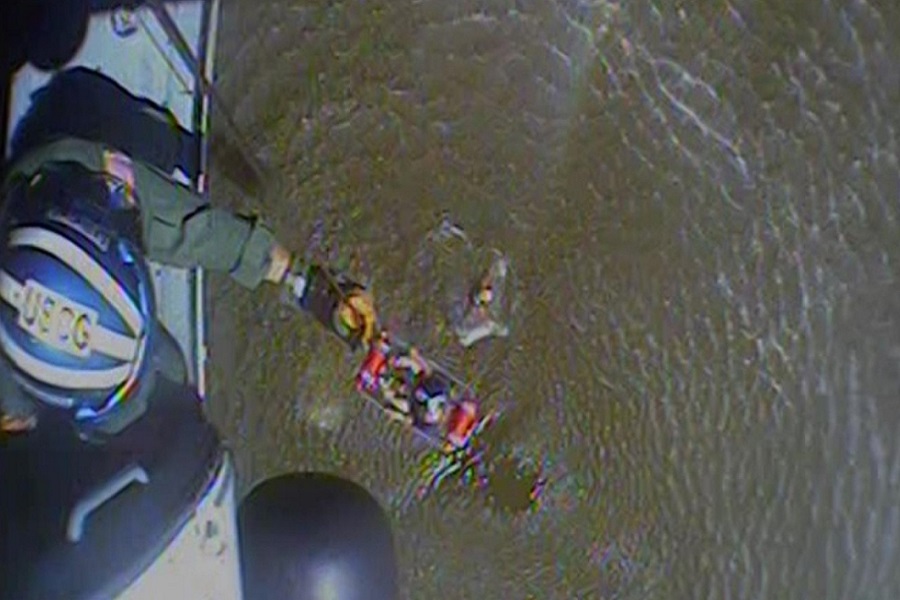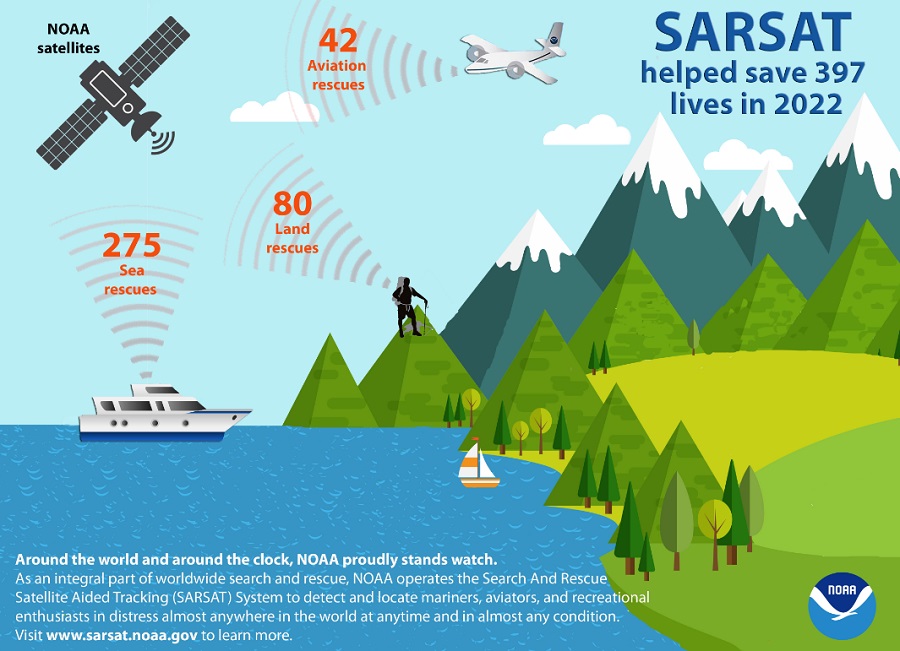
While NOAA’s constellation of weather satellites provides a wealth of data and imagery to help meteorologists forecast the weather and warn people of impending storms, the satellites also saved lives through their SARSAT technology. According to NOAA, 397 people across the United States have been rescued by the satellite-based technology.
SARSAT, short for Satellite-Aided Tracking System for Search and Rescue, uses a network of US spacecraft to detect and locate distress signals from aircraft, ships and emergency beacons called handheld Personal Locator Beacons (PLBs). The USSR developed a similar system COSPAS. In 1979, four countries—the United States, Canada, France, and the Soviet Union—joined to form COSPAS-SARSAT to help locate people in distress around the world.
The origins of SARSAT can be traced back to October 1972, when a plane carrying two members of the U.S. Congress, Rep. Hale Boggs (D-Louisiana) and House Majority Leader and Rep. Nick Begich (D-Alaska). A massive search and rescue effort was launched, but to this day, no trace of them or their plane has been found. In response to this tragedy, Congress required that all aircraft in the United States carry Emergency Locator Transmitters (ELTs). The device is designed to automatically activate and transmit a homing signal after a collision. ELT analog technology has been developed and available since the 1950’s. The original system was designed to automatically send a homing signal in the event of a crash.
With the transition from the 1960s to the 1970s, significant advances were made in space technology and space-based applications. Space technology applications began to use satellites to solve weather communication and navigation problems. Within NASA, another benefit of satellite technology was recognized as search and rescue. It is thought that if the overflying aircraft within the limited range of the downed plane could pick up the activated beacon signal, then the overflying satellite could pick up the beacon signal from a larger area.

The SARSAT system was jointly developed by three countries, all of which see space as a solution to improve search and rescue. The United States, Canada and France have jointly developed the space, ground and beacon technologies needed for the system to operate. In the US, NASA is leading the charge. In the United States, NOAA, NASA, the U.S. Coast Guard, and the U.S. Air Force collaborated to form the U.S. SARSAT program.
Once the system was up and running, its operation was handed over to NOAA, where it remains today. As the system began to take hold, more and more emergency beacons entered the market. The US Coast Guard, specialists in maritime search and rescue, immediately saw the benefits of 406 MHz and took aggressive steps in 1990 to make it widely available. As a result, there are over 723,000 emergency beacons registered in NOAA’s 406 MHz registration database today.
Of the 397 rescues in the US last year, 275 were water rescues, 42 were from crashed aircraft and 80 were land rescues involving PLBs. Florida had the most SARSAT rescues with 106, followed by Alaska with 56 and Utah with 20.
“The value of NOAA’s satellites has far exceeded projections,” said Dr. Steve Volz, assistant administrator for NOAA Satellite and Information Services. “SARSAT’s life-saving capabilities are due to collaboration with the U.S. Coast Guard, U.S. Air Force, NASA, and our international partners.”
While the hundreds of rescues are impressive, it’s three incidents in 2022 that really demonstrate the system’s strengths.
On June 10, a group of 17 hikers were hoisted to safety after becoming stranded on a ridge in Sandthrax Canyon, Utah. The Air Force Rescue Coordination Center was alerted by the PLB and notified the Garfield County Sheriff’s Office, which dispatched a Utah Department of Public Safety helicopter to the coordinates of the hiker in distress.
Seven people were rescued from a commercial plane that was forced to land on a frozen lake near Bethel, Alaska, on Nov. 20 due to engine failure. The Alaska Rescue Coordination Center obtained the coordinates of the downed plane and notified another aircraft company, which carried out the rescue.
A U.S. Coast Guard helicopter rescues a sailor from a capsized boat off the coast of New Smyrna Beach, Fla., on Aug. 5. The sailor grabbed the life raft and activated his beacon before his ship sank.